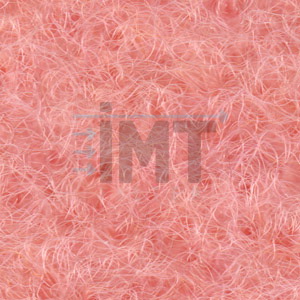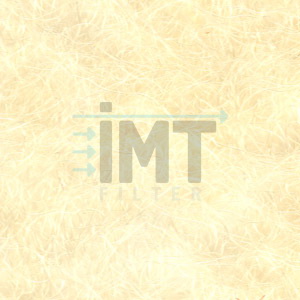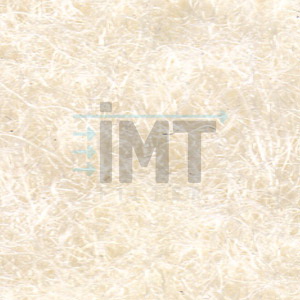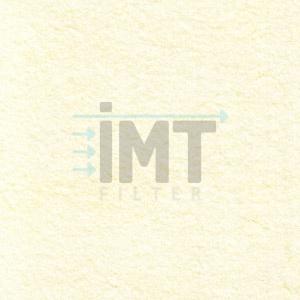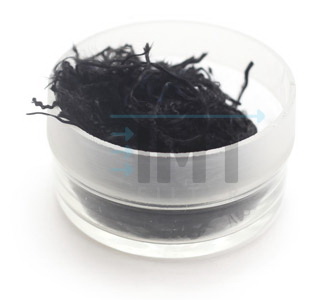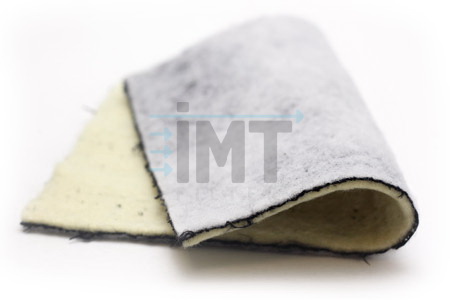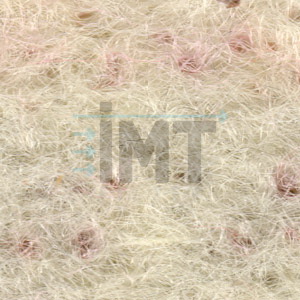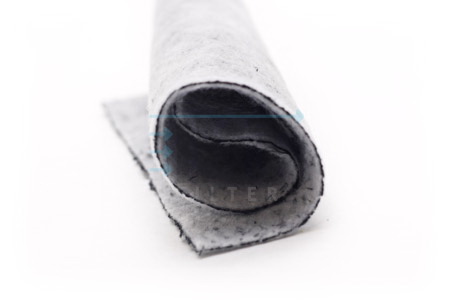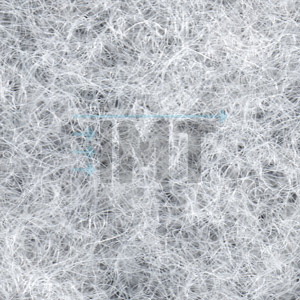The materials PANION® for air purification of tobacco smoke

What is tobacco smoke?
Tobacco smoke is composition of hundred chemical substances, which are divided in groups due to their chemical nature:
- Highly dispersed airborne particulates
- Organic unionized substances
- Inorganic substances
- Substances of acid nature
- Substances of basic nature
Why are the filters with materials PANION® better than mechanical filters?
Smell of smoke is caused by combined effect of all its components. The most air impurities are airborne particulates, which can be removed by passing air through mechanical filters.
After such processing molecules of the most toxic chemical substances remain in air, among which are: sulfur oxides, nitrogen oxides, chlorine hydride, hydrogen cyanide, ammonia, hydrazine, neutral organic substances etc.
Some of these substances can have not a strong smell but their toxicity level is very high, so there should be sorbents, which can remove all these components, in systems for full air purification from tobacco smoke.
Excellent sorbents for removal of such substances are ion-exchange fibers PANION® as well as combined textile materials on their base consisting of ion-exchange and carbon fibers.
A usual filter plant for purification of tobacco smoke should consist of prefilter for removal of coarse suspended particulates, filter for deep purification as well as combined chemical filter including sorbents for acid, basic and organic pollutants. Such plant purifies air completely of all components of tobacco smoke.
The materials PANION® can be a base for such chemical filter and ensure an effective purification of all chemical pollutants.
Selection of materials
We propose producers of air cleaning systems of tobacco smoke to consider the following filtering materials Panion as components of filtering elements:
Panion 110 — Substances of basic nature: ammonia, amines, hydrazine etc.
Fibrous ion exchanger PANION 110
PANION 110 — weak-acid fibrous cation exchanger, an analogue of well-known trademarks VION, FIBAN, MION.
Applications:
- Air purification from volatile substances of base nature: ammonia, amines, alkalis etc. Panion 110 can be applied in industrial and domestic air cleaning systems;
- Water purification from the ions of heavy metals, water softening;
- Human protective means (respirators, gas-masks, protective costumes etc): removal of vapors of ammonia and amines.
Technical specification*:
| Functional groups: | -COOH |
| The base polymer | polyacrylonitrile (PAN) fiber |
| Ion exchange capacity, meq/g | 4 – 7 |
| Temperature working range | 0 – 80°C |
| pH working range | 1 – 12 |
| Textile forms |
|
| Stability against aggressive media | Stable against concentrated HCl, H2SO4, Na2CO3 and all organic solvents. In concentrated NaOH accumulates carboxyl acid groups |
| Regeneration | With a weak solution of acid or salt |
| Stable in multiple cycles of «sorption-regeneration», «wetting-drying» | |
* - on a customer request fibrous ion exchange material with other physical and chemical properties can be produced.
Panion 220 — Substances of acid nature SO2, SO3, HCl, NxOy etc.
Fibrous ion exchanger PANION 220
PANION 220 — fibrous polyampholyte containing primary and secondary amino groups, analogue of well-known trademarks FIBAN, MION.
Applications
- Air purification from volatile substances of acid nature (SO2, SO3, HF, HCl, H2SO4, NxOy, CrO3) in industrial and domestic air cleaning systems;
- Human protective means (respirators, gas-masks, protective costumes etc): removal of gases and vapors of acid nature;
- Wiping materials (napkins, towels etc) to remove drops of acids from human skin and surfaces of objects.
Technical specification*
| Functional groups | ≡N, =NH, -NH2, -COOH |
| The base polymer | polyacrylonitrile (PAN) fiber |
| Ion exchange capacity, meq/g | 3 – 5 (on amino groups) 1 – 1,5 (on carboxylic groups) |
| Temperature working range | 0 – 80°C |
| pH working range | 1 – 12 |
| Textile forms |
|
| Stability against aggressive media | Stable against concentrated solutions of acids, soda and all organic solvents. |
| Regeneration | With a weak solution of soda Na2CO3 |
| Stable in multiple cycles of «sorption-regeneration», «wetting-drying» | |
* - on a customer request fibrous ion exchange material with other physical and chemical properties can be produced.
Fibrous ion exchanger PANION 310
PANION 310 – fibrous anion exchanger
Applications
- Air purification from volatile substances of acid nature (SO2, SO3, HF, HCl, HCOOH, CrO3 и etc) in industrial and domestic air cleaning systems;
- Human protective means (respirators, gas-masks, protective costumes etc): removal of gases and vapors of acid nature (SO2, SO3, HF, HCl, HCOOH, CrO3);
Technical specification*
| Functional groups | -N(CH3)2, =NH |
| The base polymer | polyacrylonitrile (PAN) fiber |
| Ion exchange capacity, meq/g | 4 - 5 |
| Temperature working range | 0 – 50°C |
| pH working range | 1 – 12 |
| Textile forms |
|
| Stability against aggressive media | Stable against diluted solutions of acids and alkalis |
| Regeneration | With a weak solution of soda Na2CO3 |
| Stable in multiple cycles of «sorption-regeneration», «wetting-drying» | |
* - on a customer request fibrous ion exchange material with other physical and chemical properties can be produced.
Panion 410 — Substances of basic nature: ammonia, amines, hydrazine etc.
Fibrous ion exchanger PANION 410
PANION 410 – fibrous chemically active filtering material for air purification from toxic substances of base nature
Applications
Air purification from volatile substances of base nature: ammonia, amines, aerosols of alkalis at low concentrations (10-500 microgram/m3), and in wide range of air humidity (30-100%);
Panion 410 is intent for application in filtering elements in forced and recycling air cleaning systems.
Panion 410 is especially effective for air purification in “clean room” of microelectronic, pharmaceutical industry, medicine etc.
Panion 410 has antimicrobial and antibacterial effect.
Technical specification*
| The base polymer | Anion exchanger with tertiary amino groups on base of polyacrylonitrile (PAN) fiber |
| Ion exchange capacity on NH3, meq/g | 2,5 – 4 |
| Air humidity working range, % | 15 – 100 |
| Temperature working range | 0 – 60°C |
| Textile forms |
|
| Regeneration | With a solution of mineral acid |
* - on a customer request fibrous ion exchange material with other physical and chemical properties can be produced.
Panion 440 — Carbon monoxide CO
Fibrous ion exchanger PANION 440
PANION 440 — fibrous ion exchanger intended for low-temperature air purification from carbon monoxide.
PANION 440 is metal-containing carbon-fibrous catalyst.
Applications
- Air purification from impurities of CO in filtering units while the content of CO is until 0,03 vol.% (20 MAC) and humidity of the cleaning air from 20 to 95%;
- Human protective means (respirators, gas-masks for removal of CO while its content in air is until 20 MAC (maximum allowable concentration) and humidity 20-85%; Self-rescuers for removal of high concentrations of CO (0,25-0,5 vol. %) in the cleaning air and humidity 30-95%.
Technical specification*
| The base polymer | carbon fibrous catalytically-activated fiber |
| Catalytic activity: residual concentration of CO in the cleaning air |
|
| Temperature working range | 0 – 500°C |
| Textile forms |
|
* - on a customer request fibrous ion exchange material with other physical and chemical properties can be produced.
Panion 510 — Combined removal of substances of acid, basic and organic nature
Fibrous ion exchanger PANION 510
PANION 510 — filtering material for air and water purification from composition of toxic substances of acid, base and organic nature.
PANION 510 – is combination of several layers of fibrous ion exchange and fibrous activated carbon textile materials. Any combination of ion exchange and active carbon materials can be produced in dependence on composition of contaminants on the customer request.
Applications
- Air purification from mixture of toxic contaminants of acid, base and organic nature: SO2, SO3, HF, HCl, HCOOH, CrO3, organic acids, NH3, amines, benzene, acetone, formaldehyde, bad-smelling substances, poisonous substances, warfare agents etc. PANION 510 is effective in wide range of air humidity (30-100%) in industrial and domestic air cleaning systems;
- Water purification from toxic organic contaminants, ions of heavy metals, nitrates, anions of metals (chrome, molybdenum, tungsten, vanadium), water softening;
- Human protective means (respirators, gas-masks, protective costumes etc etc): removal toxic substances of acid (SO2, SO3, HF, HCl etc.), base (NH3, amines), and organic (benzene, acetone, toluene, warfare agents, poisonous substances) nature.
Technical specification*
| Functional groups | Amino- and carboxylic groups |
| Adsorption activity on methylene blue, mg/g | min 26 |
| Ion exchange capacity, meq/g | min 0,6 (on amino groups) min 0,8 (on carboxylic groups) |
| Textile forms | Non-woven needle-punched fabric |
| Surface density | 400 – 1000 g/m2 |
| Width | max 1600 mm |
| Thickness | 3 – 10 mm |
| Textile form ion exchange layers | Non-woven needle-punched fabric |
| Textile form of fibrous active carbon material | Non-woven material, activated carbon gauze fabric, fabric |
| Temperature working range | 0 – 50°С |
| pH working range | 1 – 12 |
| Regeneration | Type 1, 2 – are not regenerating type 3 – with water vapor |
* - on a customer request fibrous ion exchange material with other physical and chemical properties can be produced.

